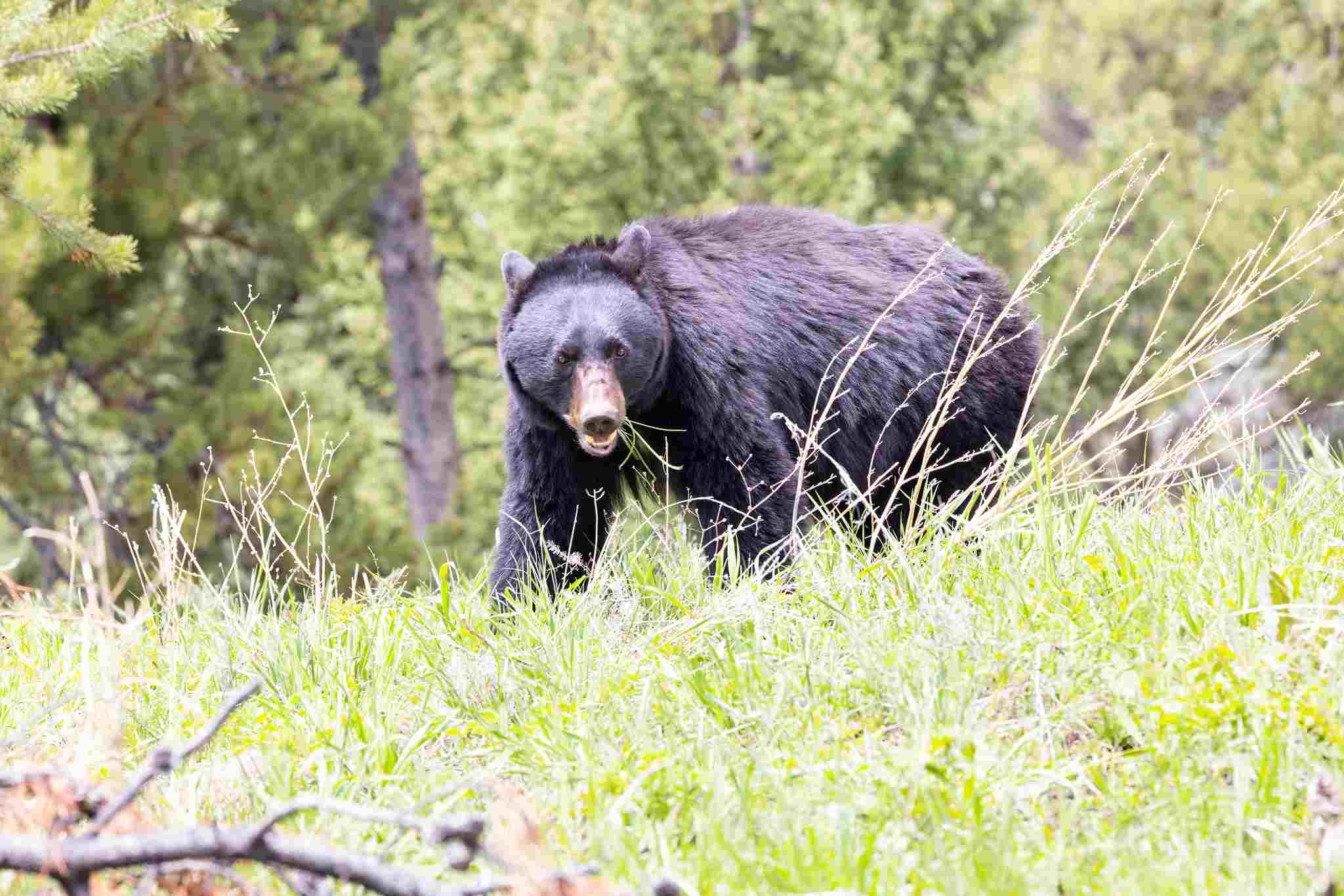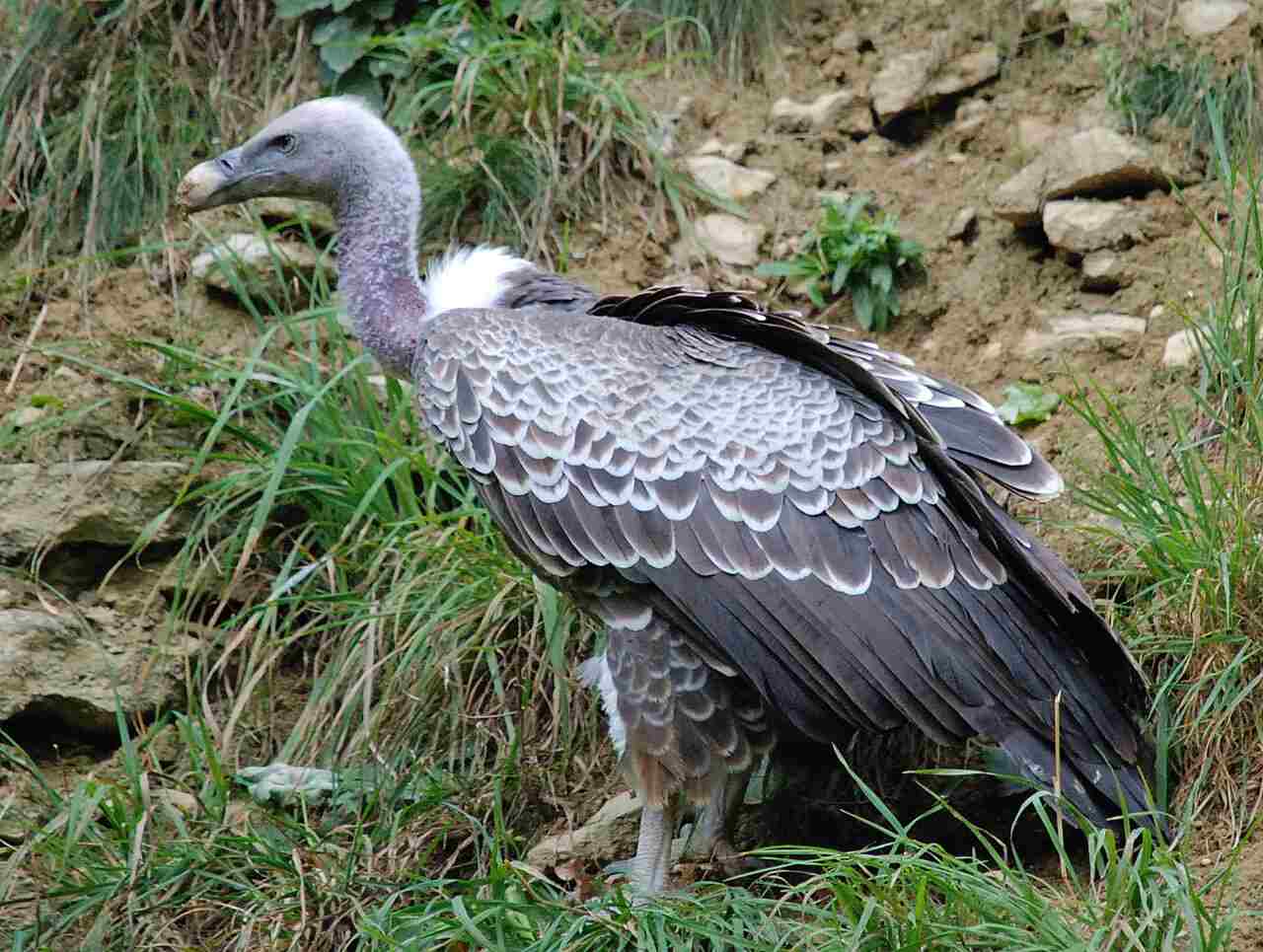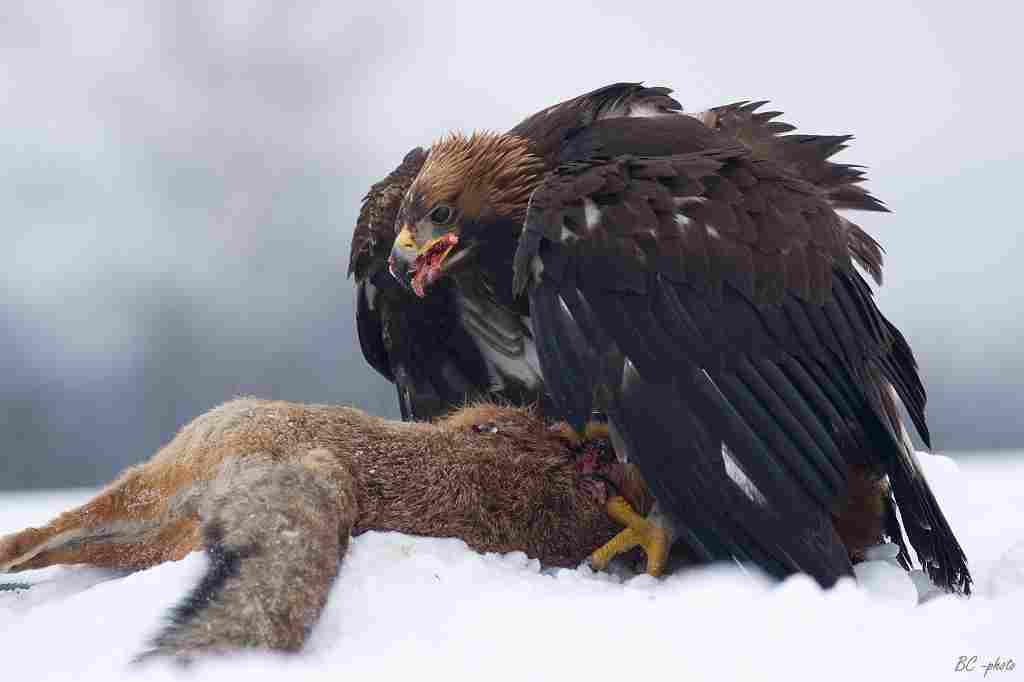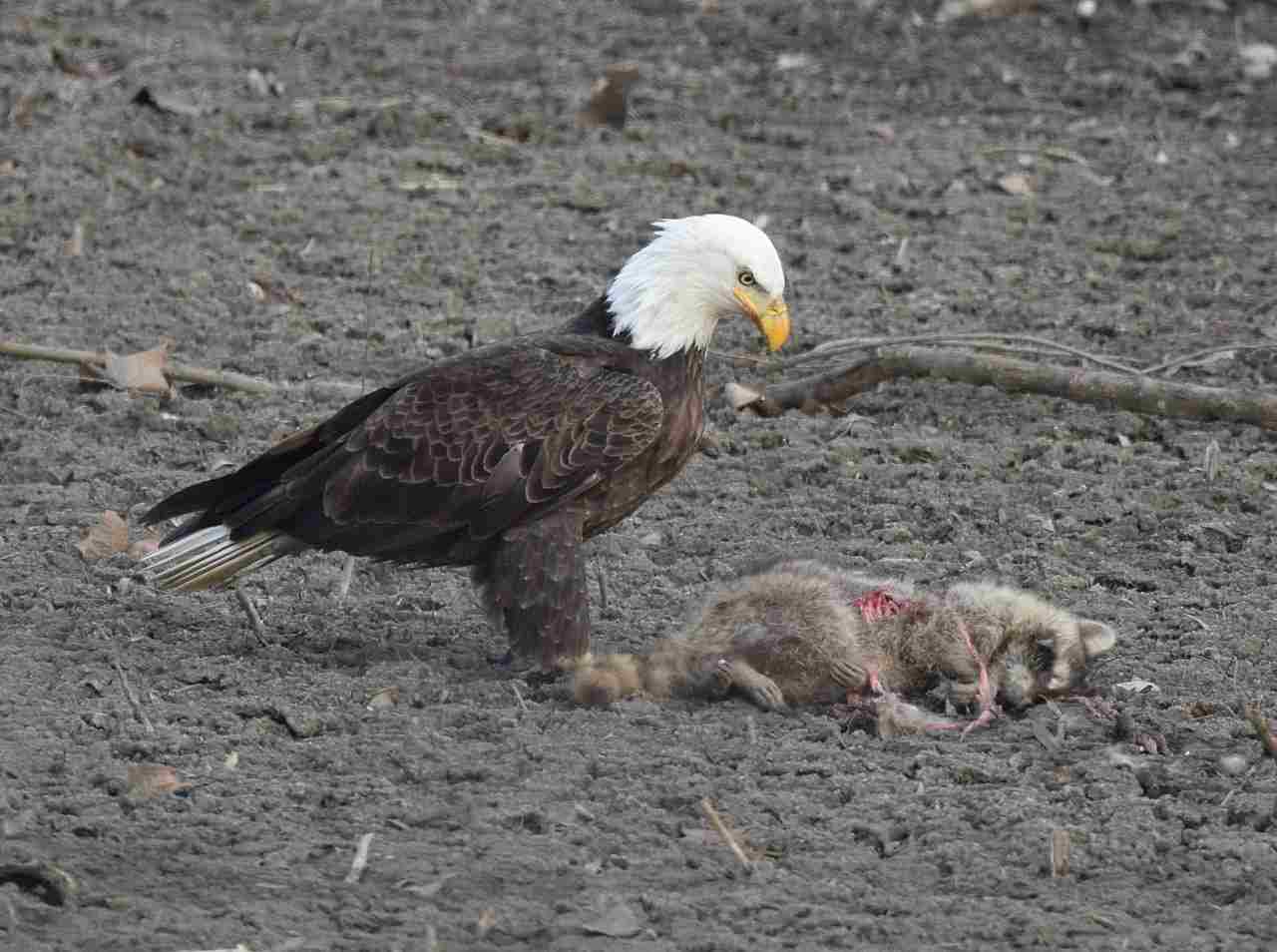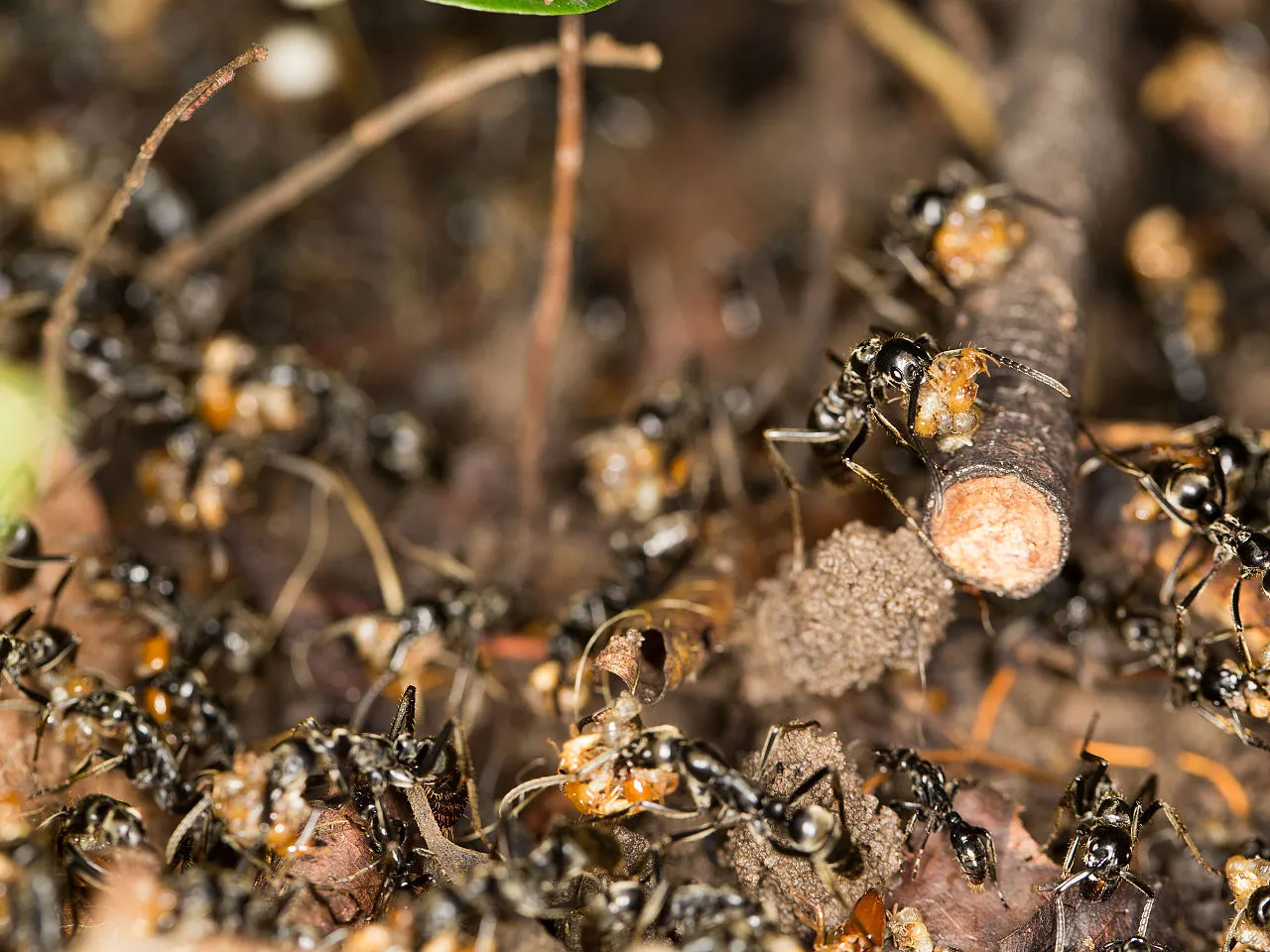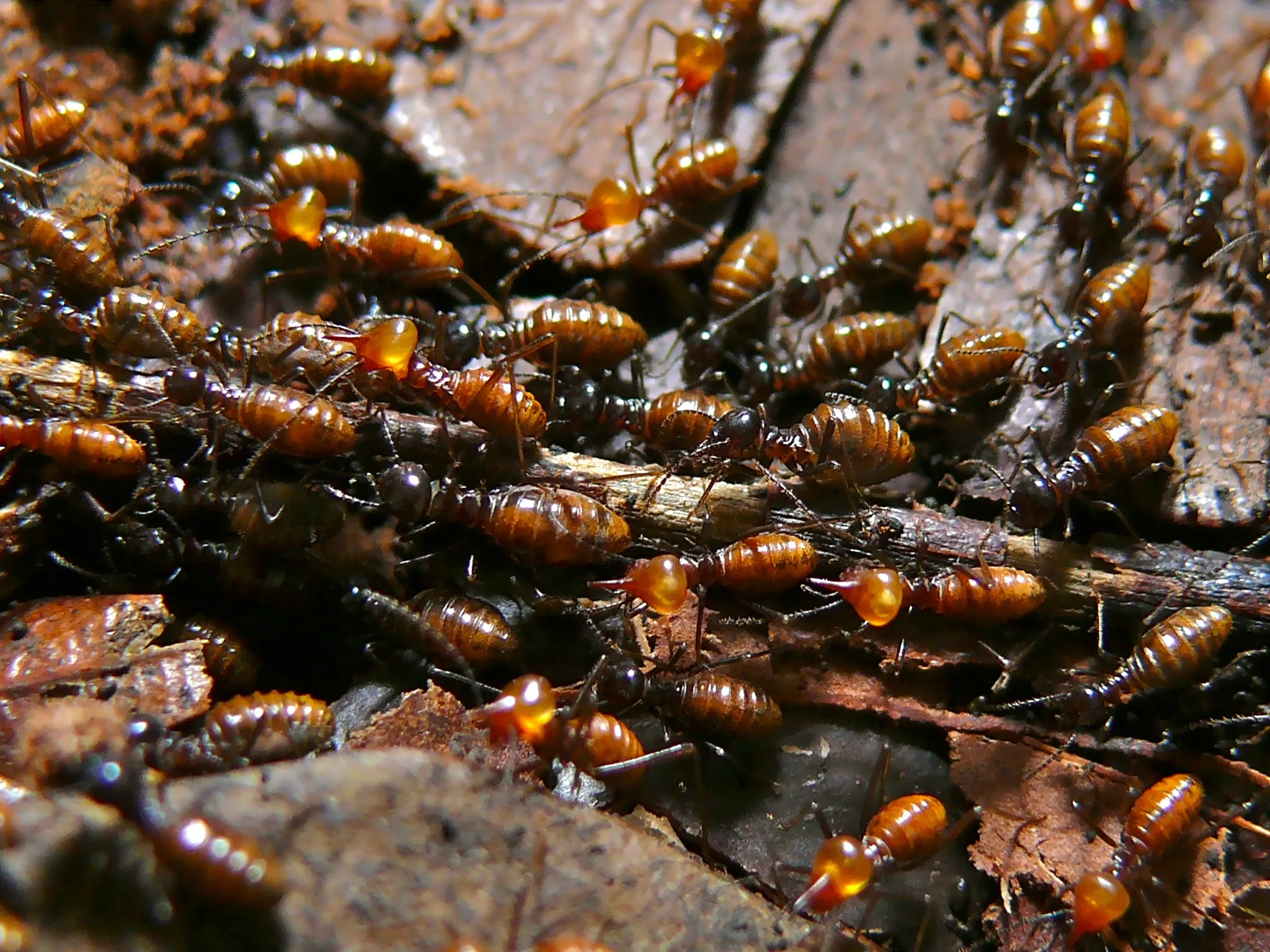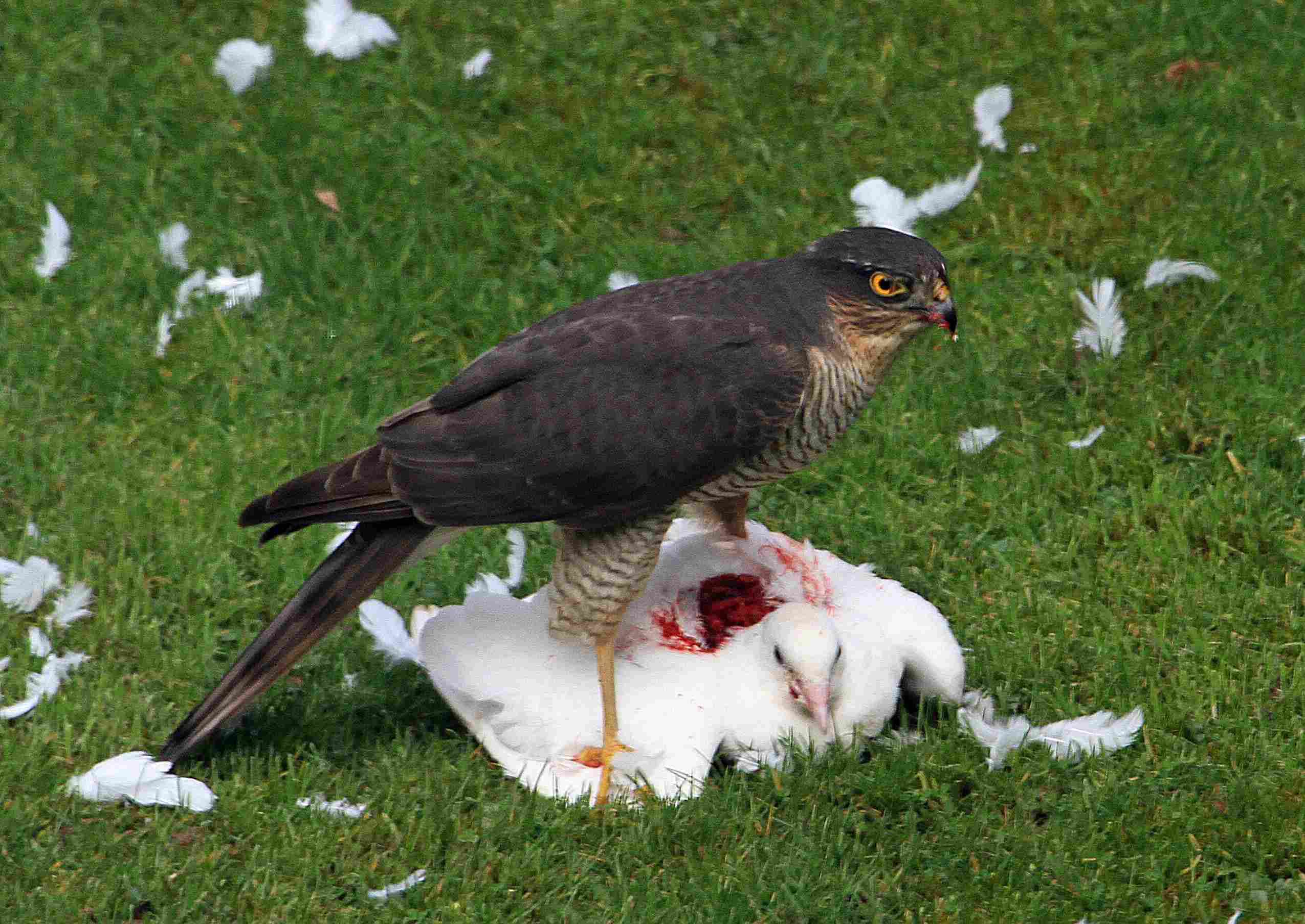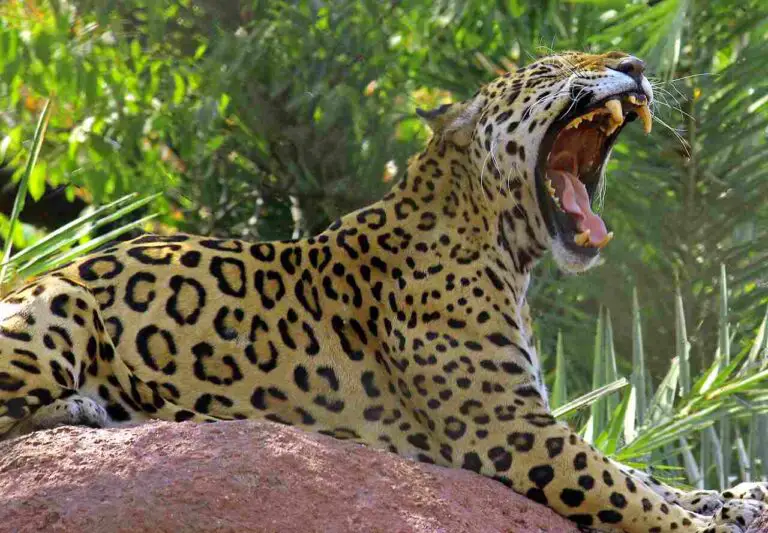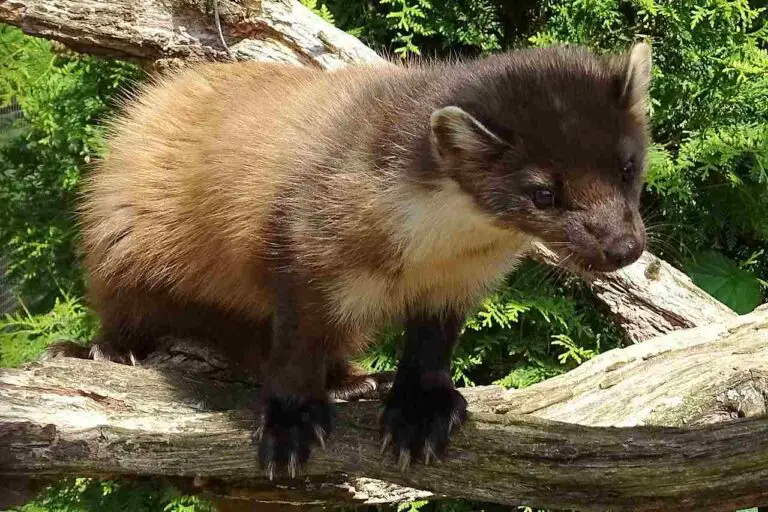9+ Scavengers In The Deciduous Forest Ecosystem Discussed
Examples of scavengers in the deciduous forest ecosystem are crows, vultures, hawks, eagles, foxes, raccoons, bears, blowflies, termites, bark beetles, and sow bugs. These organisms play a crucial role in breaking down dead organic matter, such as animal carcasses and decaying plant material, which helps maintain a clean forest environment. By consuming this matter, they contribute to nutrient cycling, providing essential nutrients to the soil and supporting plant growth. Scavengers also reduce the spread of diseases and help maintain the balance and sustainability of the forest ecosystem.
1. Termite
Termites are critical decomposers in deciduous forest ecosystems, playing a significant role in breaking down dead plant material, especially wood and leaf litter. These tiny insects live in colonies that can range from hundreds to thousands of individuals. Their social structure is highly organized, with different roles for workers, soldiers, and reproductives. Termites consume cellulose, the main component of plant cell walls, breaking it down with the help of symbiotic bacteria and protozoa in their guts. This decomposition process is vital for recycling nutrients back into the ecosystem, promoting soil health and supporting plant growth.
In deciduous forests, termites can be found in various habitats, such as fallen logs, stumps, and even within living trees. Their activity creates tunnels and chambers, which aerate the soil and improve water infiltration. By decomposing dead wood, termites release nutrients that become available for other organisms, fostering a rich and diverse ecosystem. Despite their reputation as pests, especially in human structures, termites play an essential role in maintaining the health and balance of deciduous forests.
2. Bark Beetle
Bark beetles are small insects that are known for their role in breaking down dead or dying trees in deciduous forests. These beetles are typically seen burrowing into the bark of trees, creating intricate tunnel systems where they lay their eggs. The larvae feed on the inner bark, disrupting the tree’s ability to transport nutrients and water. While bark beetles are sometimes associated with tree mortality, they play an important role in forest ecosystems by accelerating the decomposition process and providing food for other organisms.
In addition to their role in decomposition, bark beetles can influence forest dynamics by selectively targeting stressed or weakened trees, allowing healthier trees to thrive. This process of natural selection can help maintain the overall health of the forest. As bark beetles break down the inner bark, they contribute to nutrient cycling, allowing the resulting organic matter to enrich the soil. This process also creates habitats for other scavengers and decomposers, further supporting the biodiversity of the forest ecosystem.
3. Sow Bug
Sow bugs, also known as woodlice or pill bugs, are small crustaceans that play a significant role as decomposers in deciduous forests. They are commonly found in damp, dark environments such as under logs, rocks, or decaying leaves. Sow bugs feed on dead plant material, including decaying leaves, wood, and other organic debris. Their activities help break down complex organic compounds into simpler forms, which then become part of the soil’s nutrient cycle.
These creatures are essential for soil health, as they contribute to the formation of humus, a critical component of fertile soil. Sow bugs also aerate the soil through their burrowing activities, improving water infiltration and root growth. As primary decomposers, they serve as a food source for many other organisms in the forest ecosystem, including birds, small mammals, and other invertebrates. Their role in breaking down organic matter helps maintain the ecological balance and supports a diverse array of life in deciduous forests.
4. Fox
Foxes are versatile scavengers and predators in deciduous forest ecosystems. As opportunistic feeders, they consume a wide range of food sources, including small mammals, birds, insects, and plant material. Their scavenging behavior often leads them to carcasses left behind by other predators, where they play an important role in cleaning up dead animals. This activity helps prevent the spread of diseases and contributes to the overall cleanliness and health of the forest environment.
Foxes’ adaptable diet and foraging strategies make them valuable contributors to ecosystem stability. They help control populations of small mammals and other prey, which in turn influences vegetation growth and the structure of the forest. Foxes also disperse seeds through their droppings, aiding in plant reproduction and diversity. As scavengers, they often utilize a variety of habitats within the forest, contributing to the complex web of interactions that characterize deciduous forest ecosystems.
5. Crow
Crows are highly adaptable and intelligent birds that play a significant role as scavengers in deciduous forest ecosystems. These omnivorous birds are known for their problem-solving skills and ability to use tools. Crows feed on a variety of food sources, including fruits, seeds, insects, small mammals, and carrion. As scavengers, they often feed on the remains of dead animals, helping to clean up the forest floor and reduce the risk of disease spread.
Their scavenging behavior also contributes to nutrient cycling within the ecosystem, as they break down organic matter and disperse seeds. Crows are social birds and often form large flocks, which can help in locating food sources and warding off potential threats. By consuming carrion and other organic matter, crows play an important role in maintaining the balance and health of deciduous forests. Their intelligence and adaptability make them key components in the complex food web of these ecosystems.
6. Blowfly
Blowflies are important decomposers in deciduous forests, playing a key role in breaking down dead animals and organic matter. These insects are known for their metallic colors and rapid life cycles. When an animal dies in the forest, blowflies are among the first to arrive, attracted by the scent of decomposition. They lay their eggs on the carcass, and the larvae (maggots) feed on the decaying tissue, accelerating the decomposition process.
This rapid breakdown of dead animals helps recycle nutrients into the ecosystem, providing a source of organic matter for soil and other organisms. Blowflies are also an important food source for various predators, including birds, amphibians, and small mammals. By efficiently breaking down carrion, blowflies help maintain the ecological balance and cleanliness of deciduous forests. Although they are often associated with unappealing aspects of decomposition, their role is vital for the health and sustainability of forest ecosystems.
7. Vulture
Vultures are large birds that serve as critical scavengers in deciduous forest ecosystems. Known for their keen eyesight and acute sense of smell, vultures are able to locate carcasses from great distances. They play a unique role in the ecosystem by feeding almost exclusively on carrion, helping to clean up dead animals and reduce the spread of disease. Vultures’ digestive systems are highly adapted to handle bacteria and pathogens, allowing them to consume carrion without harm.
By feeding on dead animals, vultures contribute to nutrient recycling and help maintain a clean environment. They often work in groups, efficiently consuming large carcasses and leaving behind little waste. Vultures’ scavenging activities also reduce the risk of diseases spreading to other wildlife and even humans. Despite their reputation as ominous birds, vultures are invaluable to the health and sustainability of deciduous forests, serving as nature’s cleanup crew and playing a key role in the complex food web.
8. Hawk
Hawks are formidable predators in deciduous forest ecosystems, known for their keen vision and powerful flight capabilities. While they primarily hunt live prey such as small mammals, birds, and reptiles, they also scavenge when the opportunity arises. Hawks’ ability to detect movement from great heights allows them to spot carrion from afar, making them important contributors to the cleanup process in forests. Their predatory nature helps maintain the balance of prey populations, while their scavenging behaviors ensure that no organic matter goes to waste.
When scavenging, hawks typically focus on smaller carcasses, which they can quickly consume or carry away. This dual role as predator and scavenger adds to their versatility and importance in the ecosystem. Hawks help keep the forest floor clean by reducing the amount of dead organic material, thereby contributing to nutrient cycling. Additionally, their scavenging activities can deter other opportunistic scavengers from congregating, which may help control the spread of disease. Overall, hawks play a multifaceted role in the health and balance of deciduous forest ecosystems.
9. Eagle
Eagles are among the largest birds of prey in deciduous forest ecosystems, known for their majestic appearance and powerful hunting skills. Although eagles are primarily known as predators, they are also opportunistic scavengers. When they find a carcass, eagles will feed on the remains, helping to decompose dead animals and recycle nutrients back into the forest. Their scavenging behavior can vary depending on the availability of live prey, but they often take advantage of carrion to supplement their diet.
Eagles’ scavenging activities contribute to the cleanliness and health of the forest ecosystem. By consuming carrion, they play a crucial role in preventing the buildup of decaying matter, which can attract pests and spread disease. Eagles’ presence in the forest also influences other scavengers, as they are at the top of the food chain and can deter smaller scavengers from feeding on a carcass. Their ability to switch between predation and scavenging makes them adaptable and essential components of the deciduous forest ecosystem, ensuring that the food web remains balanced and resilient.
10. Bear
Bears are among the largest mammals in deciduous forest ecosystems, known for their strength, adaptability, and varied diet. While bears are omnivorous and primarily feed on berries, nuts, roots, and small mammals, they are also opportunistic scavengers. Bears will readily consume carrion when available, playing an important role in the decomposition of dead animals. This scavenging behavior helps ensure that no organic matter goes to waste, contributing to nutrient cycling within the forest ecosystem.
In addition to their scavenging, bears’ activities contribute to the health and balance of the forest. As they search for food, bears can break down fallen logs and other organic debris, helping to create habitats for smaller organisms. Their scavenging not only cleans up the forest floor but also provides them with a source of energy, allowing them to sustain their large bodies. This role as both scavenger and ecosystem engineer makes bears crucial to maintaining the ecological balance in deciduous forests.
11. Raccoon
Raccoons are highly adaptable mammals commonly found in deciduous forest ecosystems. They are known for their dexterity and intelligence, which they use to find a wide variety of food sources. As omnivorous scavengers, raccoons will eat almost anything, including fruits, nuts, insects, small animals, and carrion. Their scavenging behavior is particularly helpful in cleaning up organic waste, contributing to the decomposition process, and reducing the risk of disease spread.
Raccoons’ scavenging activities often bring them into close contact with human environments, where they can scavenge through garbage cans and other refuse. While this can sometimes cause conflicts, their scavenging in the forest serves a valuable ecological function. Raccoons help break down organic matter, returning nutrients to the soil and maintaining the health of the forest ecosystem. Their role as scavengers and omnivores makes them key players in the complex food web of deciduous forests, ensuring that the ecosystem remains vibrant and diverse.
*Summary
-
Termite
-
Decomposes dead wood and leaf litter.
-
Lives in colonies with a structured social hierarchy.
-
Breaks down cellulose with the help of symbiotic organisms.
-
Contributes to nutrient cycling and soil health.
-
Helps aerate soil through tunneling.
-
-
Bark Beetle
-
Feeds on the inner bark of trees, creating tunnels.
-
Targets stressed or dying trees, impacting forest dynamics.
-
Plays a role in nutrient cycling and decomposing dead wood.
-
Creates habitats for other organisms through their tunneling.
-
-
Sow Bug
-
Small crustaceans that feed on decaying plant material.
-
Contributes to the formation of humus and soil health.
-
Aerates the soil through burrowing activities.
-
Serves as a food source for other forest animals.
-
-
Fox
-
Opportunistic feeders, consuming a wide range of food.
-
Scavenges carcasses, helping to maintain cleanliness.
-
Controls populations of small mammals and other prey.
-
Contributes to seed dispersal and forest biodiversity.
-
-
Crow
-
Intelligent birds that scavenge a variety of food sources.
-
Help clean up the forest floor by feeding on carrion.
-
Contributes to nutrient cycling and seed dispersal.
-
Forms large social flocks for foraging and protection.
-
-
Blowfly
-
Decomposes dead animals by feeding on carrion.
-
Rapidly breaks down organic matter, aiding nutrient recycling.
-
Plays a key role in preventing the spread of disease.
-
Serves as a food source for other predators.
-
-
Vulture
-
Large birds that specialize in feeding on carrion.
-
Helps maintain a clean environment by consuming dead animals.
-
Contributes to nutrient recycling in the forest.
-
Reduces the spread of disease through scavenging.
-
-
Hawk
-
Predatory birds with scavenging behavior.
-
Hunts live prey but also feeds on smaller carcasses.
-
Contributes to nutrient cycling and forest cleanliness.
-
Helps maintain balance in the ecosystem through predation and scavenging.
-
-
Eagle
-
Large birds of prey that also scavenge for food.
-
Consumes carrion, reducing the buildup of decaying matter.
-
Influences other scavengers in the forest ecosystem.
-
Balances between predation and scavenging roles.
-
-
Bear
-
Large omnivorous mammals with scavenging tendencies.
-
Feeds on carrion, contributing to decomposition and nutrient cycling.
-
Breaks down fallen logs, creating habitats for other organisms.
-
Balances forest health through its diverse diet and activities.
-
-
Raccoon
-
Highly adaptable scavengers with a varied diet.
-
Feeds on almost anything, including carrion.
-
Contributes to decomposition and reduces the risk of disease.
-
Known for scavenging in both forest and human environments.
-
| Scavenger | Summary |
| Termite |
Decomposes dead wood and leaf litter, contributes to nutrient cycling and soil health through tunneling and breaking down cellulose with symbiotic organisms.
|
| Bark Beetle |
Feeds on inner bark of stressed or dying trees, creates tunnels that impact forest dynamics, and aids in nutrient cycling by decomposing dead wood.
|
| Sow Bug |
Small crustaceans that consume decaying plant material, helping form humus and aerate the soil while providing a food source for other forest organisms.
|
| Fox |
Opportunistic feeder that scavenges carcasses, helping to maintain cleanliness, while also controlling small mammal populations and dispersing seeds.
|
| Crow |
Intelligent birds that scavenge a wide variety of food sources, contributing to forest cleanliness, nutrient cycling, and seed dispersal through their activities.
|
| Blowfly |
Insects that rapidly decompose carrion, aiding nutrient recycling and preventing the spread of disease, while serving as a food source for other predators.
|
| Vulture |
Large birds specializing in scavenging carrion, contributing to nutrient recycling and reducing the spread of disease by consuming dead animals in the forest.
|
| Hawk |
Predatory birds that also scavenge smaller carcasses, maintaining ecosystem balance through both predation and scavenging, while aiding nutrient cycling.
|
| Eagle |
Large birds of prey that scavenge when live prey is scarce, consuming carrion and influencing other scavengers, contributing to forest cleanliness and nutrient recycling.
|
| Bear |
Large omnivorous mammals that scavenge for carrion, contributing to decomposition and nutrient cycling while also breaking down logs to create new habitats.
|
| Raccoon |
Highly adaptable scavengers that feed on almost anything, including carrion, aiding decomposition and reducing disease risks in both forest and urban environments.
|
Related FAQs
FAQ 1: What is the role of scavengers in a deciduous forest ecosystem?
Scavengers play a critical role in deciduous forest ecosystems by cleaning up dead and decaying organic matter. They consume carrion, dead plant material, and other decomposing substances, which helps recycle nutrients back into the ecosystem. This process is vital for maintaining soil health, preventing the spread of disease, and supporting biodiversity. By breaking down organic matter, scavengers contribute to nutrient cycling and help keep the forest clean.
FAQ 2: How do scavengers differ from decomposers in forest ecosystems?
While scavengers and decomposers both play roles in breaking down organic matter, they differ in their methods. Scavengers are animals that consume larger pieces of dead organic material, such as carrion or decaying plant matter. Decomposers, on the other hand, are often microorganisms like bacteria and fungi that break down organic matter at a microscopic level. Scavengers initiate the decomposition process, while decomposers complete it, turning organic material into nutrients that benefit the soil and plant life.
FAQ 3: What are the most common scavengers in deciduous forests?
Common scavengers in deciduous forests include a wide range of animals, such as crows, vultures, hawks, eagles, foxes, raccoons, bears, blowflies, termites, bark beetles, and sow bugs. These organisms have different feeding habits and ecological roles, but all contribute to the decomposition process and nutrient cycling in the forest. They help keep the ecosystem balanced by cleaning up dead organic matter and preventing the spread of disease.
FAQ 4: How do scavengers contribute to nutrient cycling in forests?
Scavengers contribute to nutrient cycling in forests by consuming and breaking down dead organic matter, such as animal carcasses and decaying plant material. As they consume this material, they help release nutrients like nitrogen, phosphorus, and potassium back into the soil, where they can be used by plants and other organisms. This process supports plant growth and helps maintain a healthy forest ecosystem.
FAQ 5: What is the impact of scavengers on forest health and sustainability?
Scavengers have a significant impact on forest health and sustainability by cleaning up dead organic matter and preventing the spread of disease. By consuming carrion and decaying plant material, they help maintain a clean environment and reduce the risk of pest infestations and disease outbreaks. Scavengers also play a role in maintaining biodiversity, as they are part of the complex food web in forest ecosystems. Their activities support nutrient cycling, which is crucial for plant growth and overall forest sustainability.
